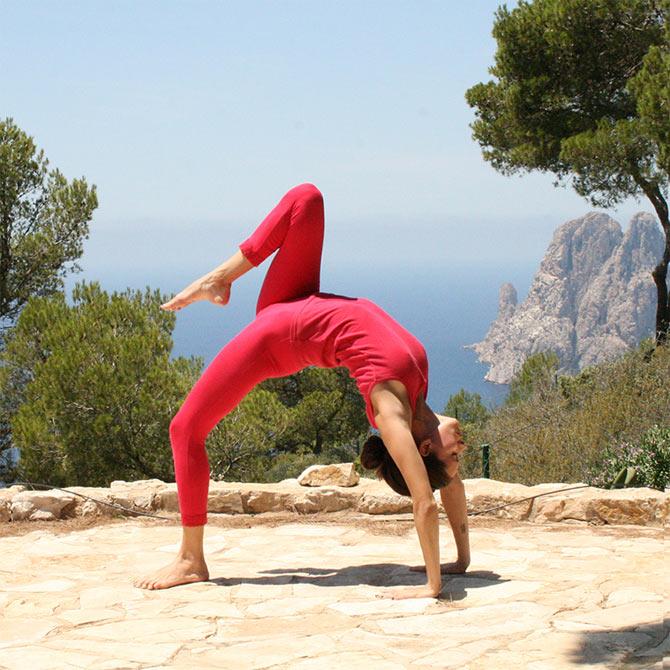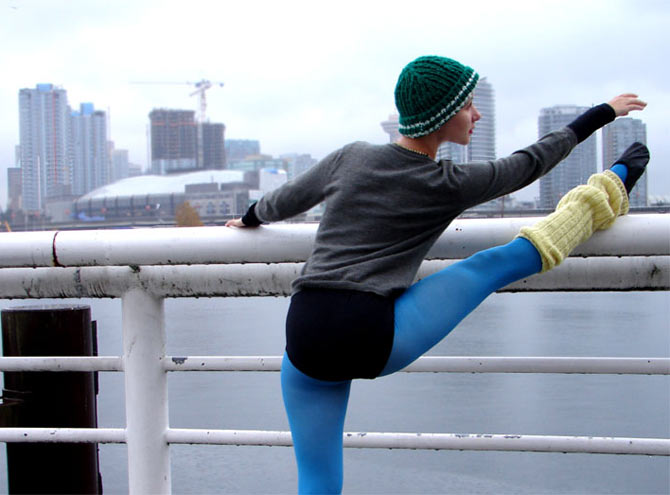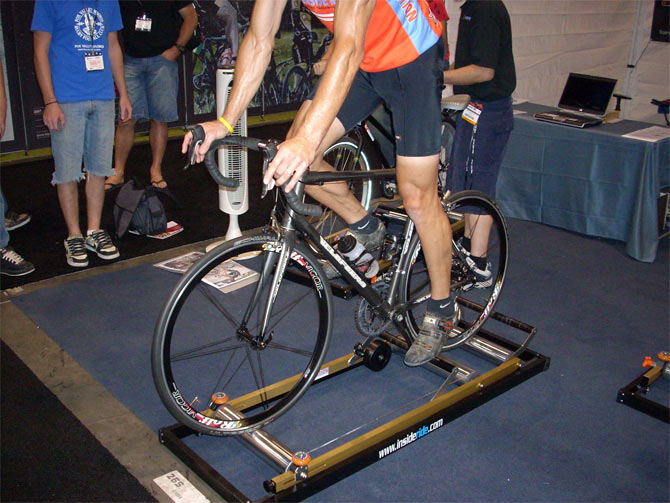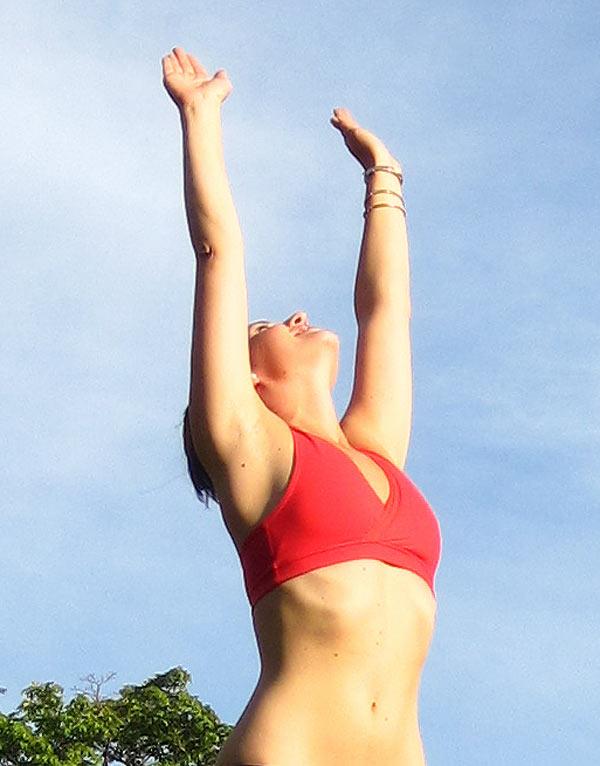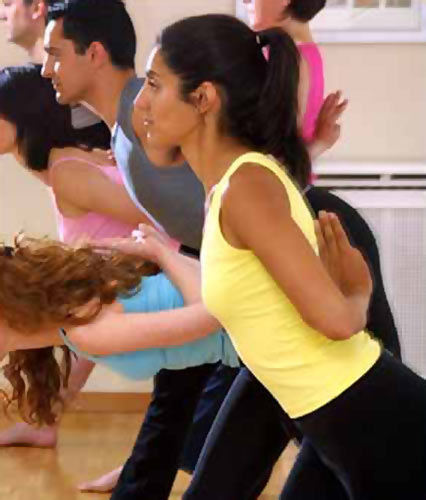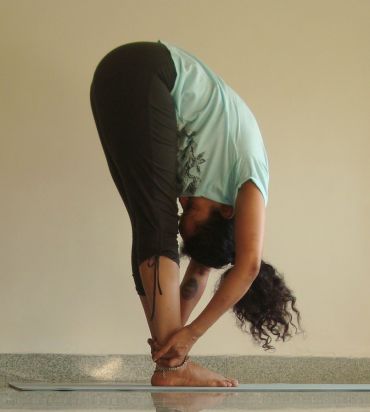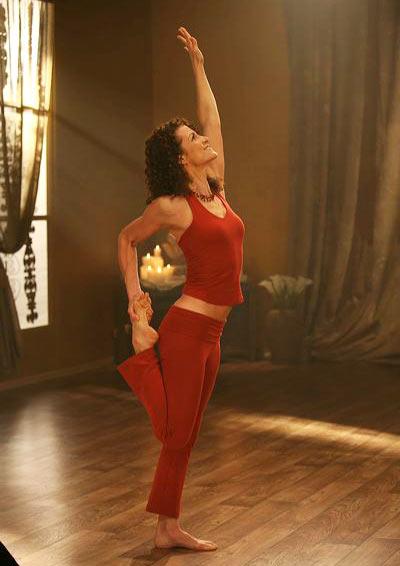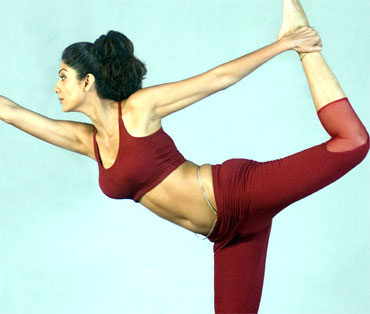 | « Back to article | Print this article |
Common stretching mistakes and how to fix them
Stretching incorrectly can keep you from attaining your exercise goals.
Fitness expert Brinda Sapat tells you how to correct the most common stretching mistakes.
Stretching is often overlooked or conducted in a quick, haphazard manner leading to mistakes that can result in injury and can also keep you from attaining your fitness goals.
Read on to learn how you can set them straight.
To understand better, there are three stretching terms you need to be familiar with:
Static stretch: This is a holding stretch, the one where you get deep into the stretch and hold for a while. It helps to relax and lengthen the muscle, reducing soreness and increasing flexibility. These stretches are done post workout.
Example: Toe reach
Rhythmic stretching: This is where you stretch and release the muscle repeatedly in a flowy, rhythmic manner. Done as the latter part of the warm up, it allows the muscle to free up through its entire length in preparation for the workout to follow.
Example: Side-to-side lunges with alternating hand-to-toe reaches.
Ballistic/Bouncing stretches: This stretch is where you get to a final point and bounce back and forth, in and out of the stretch.
So what are the most common stretching mistakes and just how can you fix them?
Please click NEXT to continue reading...
1. Not stretching
Seems like a waste of time? Not stretching can cause a lot of trouble!
Warming up, followed by some rhythmic (not static) stretching helps open up the muscles that will be used during the workout.
This allows the muscle to work though its full range as you exercise, making the exercise effective and prevents injury.
The muscles go through a lot of contraction during the workout, causing them to shorten.
Stretching post workout gets them back to normal length. It helps prevent stiffness and soreness too. Missing out on this will leave you feeling tight and achy for the next day or two.
And most importantly, stretching improves FLEXIBILITY of the joints, one of the main components of a fit and healthy body.
Not balancing out workouts with stretching leads to joint problems in the long run like stiff shoulders and spinal problems.
Fix it: Warm up and do a few rhythmic stretches for the large muscle groups. Post-workout, take the time to stretch out all the muscles you have worked on, holding each one for 20 seconds.
Please click NEXT to continue reading...
2. Static stretching warm-up
In a bid to get to the main workout quickly, holding stretches may sound good.
But here's what happens:
Your body is cold and unprepared to push its boundaries.
Doing a sudden toe-reach for 5 seconds is likely to hurt you, or pull the muscle.
It is not going to allow you to go deep into the stretch, so your range stays limited.
This in turn affects the performance of the exercise.
You will not be able to move your joint to the full extent, consequently not training the full muscle.
And if you try to push it through, the muscle could strain pull or in a worse case, tear.
Fix it: Do a warm up that uses dynamic movement of large muscles, eg walking, cycling or stair climbing. Then do a few rhythmic stretches for the large muscle groups.
Please click NEXT to continue reading...
3. Static stretching after a warm-up
Your body needs to be warm to start exercising. Static stretching after the warm up cools the body down back to a pre-warmed up state which can lead to injury and ineffective training.
Fix it: Follow your warm ups with rhythmic stretches. It continues to keep the body warm and heart rate up.
Please click NEXT to continue reading...
4. Poor posture
Slouching, locking the knees, curving the spine, rotating the foot outwards or inwards are very common postural errors that affect the stretch.
You may not stretch through the entire muscle or may end up stretching a totally different one!
Fix it: Get a trainer to show you how to hold yourself before getting into the stretch and the posture that needs to be maintained during a stretch. You can also get good information online if you are unable to have a trainer guide you.
Please click NEXT to continue reading...
5. Wrong Technique
Whether it is the rhythmic stretch or a static one, the correct technique to execute it ensures its safety and effectiveness.
For example, a toe reach should be performed by slowly walking your hands down the length of your legs towards your toes (for safety), maintaining a flat back (for effectiveness).
A sudden reach can hurt the muscle and a rounded back won't make it as effective.
Fix it: A trainer or workout video can guide you with the right form and technique.
Please click NEXT to continue reading...
6. Bouncing stretch
The old fashioned way of getting into a stretch and then bouncing it doesn't allow you to go deeper into it. Sudden or jerky bouncing can strain or pull the muscle.
Fix it: Get into the stretch, holding at a comfortable extent and then start pushing deeper into it, without jerking and gradually moving out of your comfort zone and hold till you can push no further.
Please click NEXT to continue reading...
7. Stretching, releasing and stretching again while doing a static stretch
Similar to bouncing, holding a stretch, releasing it and then going back into it won't get you to go all the way. Going back in with a sudden movement can strain or pull the muscle.
Fix it: Get into the stretch holding at a comfortable extent and then start pushing deeper into it without jerking and gradually moving out of your comfort zone and hold till you can push no further.
Please click NEXT to continue reading...
8. Not holding the stretch long enough
The muscle needs time to respond to the demand of lengthening. Doing a quick stretch limits the range and does not help improve flexibility.
Fix it: Hold a stretch for 20 seconds to get maximum benefits.
Brinda Sapat is Group Exercise Instructor at Gold's Gym, Napean Sea Road, Mumbai. Certified with Training Zone & Progressive Fitness (USA), she has been a fitness instructor for over a decade.
8. Not holding the stretch long enough
Top stories we would want you to read!
Click on MORE to see another feature...
